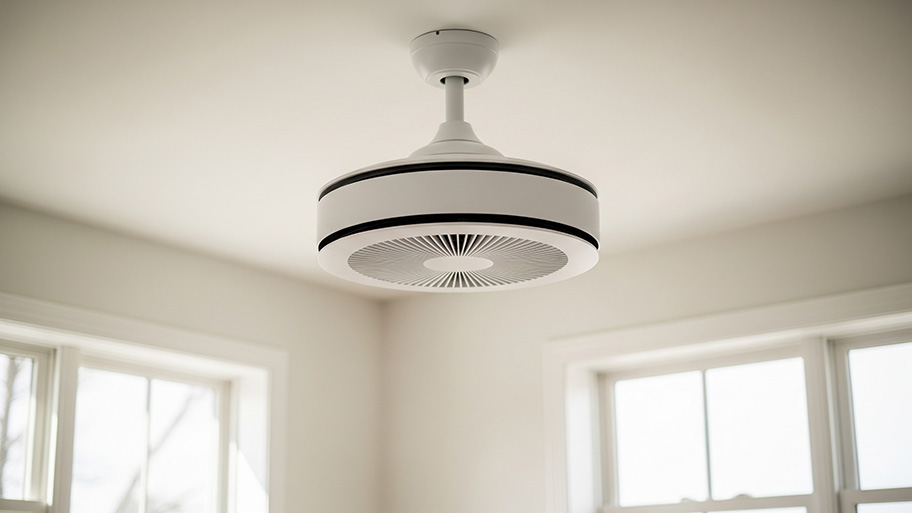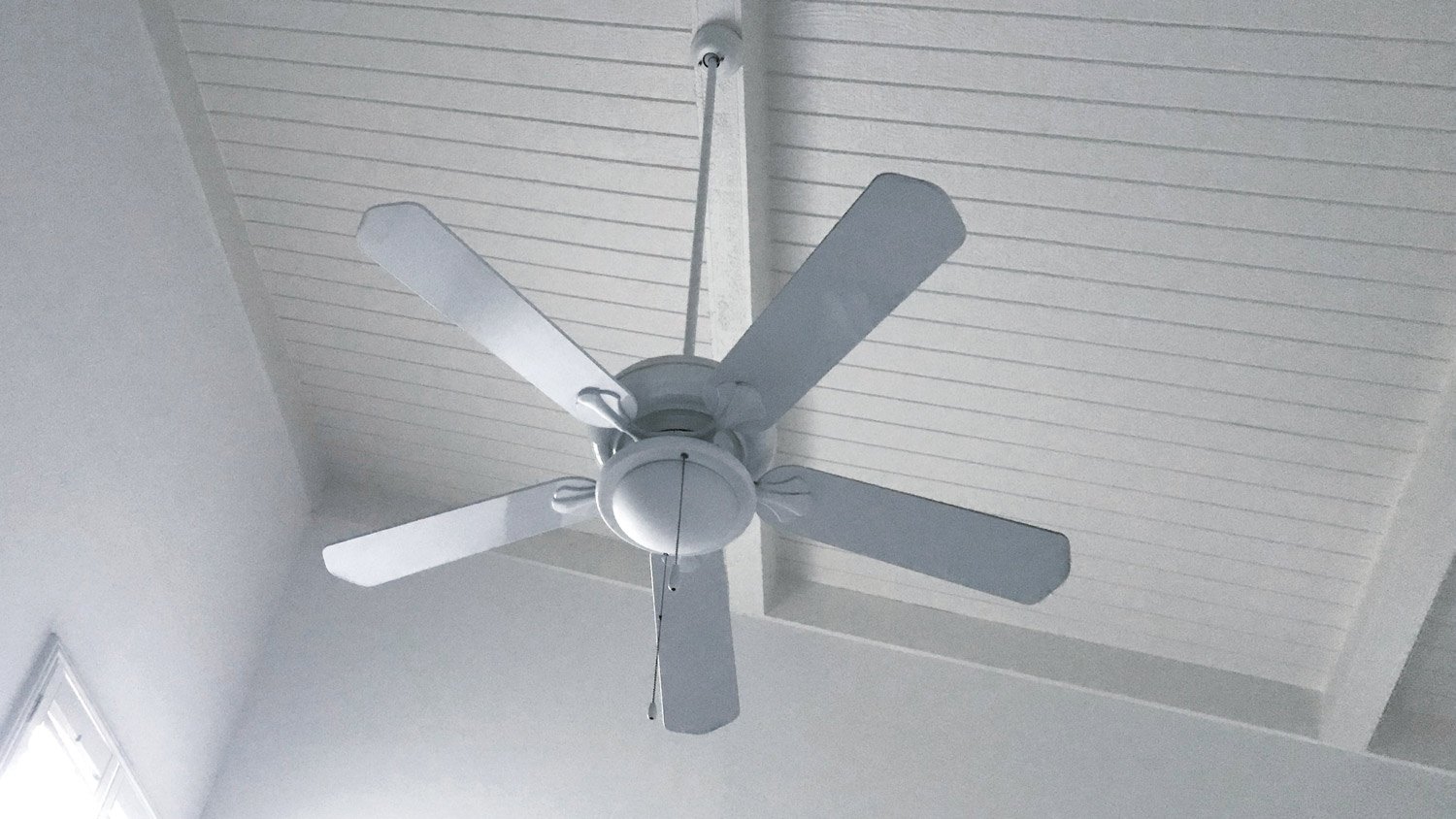
Discover the cost to install a ceiling fan, including labor, materials, and tips to save. Learn what impacts your price and how to budget for your project.
It’s systematic, why it’s your own greased lightning


You probably haven’t ever thought about oiling up your ceiling fan—who has? But some models occasionally need extra lubrication to keep things running smoothly. Learn how to oil a ceiling fan and enjoy a noise-free breeze with this DIY guide.
Before starting, consult your user manual to get the maintenance details for your specific model. If your fan requires regular oiling, the manual should state the type of non-detergent motor oil lubricant you need to purchase. It’s important that you only use a non-detergent oil—other oils are combustible and can cause a fire.
Once you know the lubricant type, gather the following supplies:
Step ladder
Paper towels or microfiber cloths
Multipurpose cleaner
Pipe cleaner
Manufacturer-recommended non-detergent motor oil
Before proceeding to work on your ceiling fan, disconnect it from its power source to prevent electrical shock or other injury. The safest option is to turn off the associated breaker on your electrical panel.
With your step ladder placed securely near your fan, climb up and look for the oil hole. Most oil holes are located on the top of the motor and near the downrod, which is the connecting piece between the motor and the mounting hardware. Most oil holes are also labeled, so you shouldn’t have to play hide and seek with it.
Bend a pipe cleaner to form a hook, and insert it about half an inch into the oil hole to check the oil level. If the pipe cleaner has oil on it, it doesn’t need additional lubrication. If it comes out dry, the ceiling fan likely requires oil.
Dirt, dust, and other debris on and inside your ceiling fan can stick to oil and build up in the motor, which is why it’s important to clean it thoroughly before adding oil. Using warm water, an all-purpose cleaner, and a microfiber cloth or paper towel, wipe dust and grime away from your fan blades and the housing.
To clean the oil hole and the motor, simply wipe it down with warm water. Optionally, you can use WD-40 degreaser to loosen up extra grime in the motor. Allow the fan to dry completely before adding oil.
Using the recommended oil, slowly pour between 1 and 2 ounces into the oil hole. If it’s been some time since you last oiled your fan, it might need additional oil.
To test your fan, slowly rotate it by hand. Check the oil again, and add more if necessary. Once the pipe cleaner comes out with oil, you’ll know that the oil reservoir is full. Turn the power back on, and run it at a slow speed to verify that it’s running properly. If your ceiling fan makes noise or rotates irregularly, you may need to take other maintenance or repair steps.
Ceiling fans require occasional maintenance to keep them running properly, and some models require oiling as part of regular maintenance. Oil keeps the components of your ceiling lubricated, which keeps them from overheating, rubbing, sticking, or grinding while the fan rotates.
Keeping your ceiling properly lubricated is a preventative maintenance step that keeps its parts from wearing out prematurely. Besides prolonging the lifespan of your ceiling fan, proper lubrication can reduce the risk of burning out the motor. It’ll also make your fan run more smoothly and efficiently, and it will prevent or resolve excessive noise.

In general, most manufacturers recommend that you oil your ceiling fan once or twice per year. The time between maintenance can vary depending on factors such as the unit model, how often you run it, and the amount of dust or debris it accumulates. If your fan requires oiling, your user manual should explain how often it’s recommended.
Newer ceiling fan models usually have sealed and self-lubricating bearings, but they might need oiling if their performance starts to suffer. In that case, you’ll likely need to remove the fan to lubricate it properly.
Other signs can also suggest that your fan may be lacking adequate lubrication. If you notice any of the following, it’s time to check your fan’s oil level:
Excessive squeaking, grinding, rattling, or other noise
Loose or damaged fan parts
Slowed rotation
Wobbling or rubbing
Oiling is an important part of ceiling fan maintenance, but other steps can also help keep it in good repair. To keep your ceiling fan running smoothly and efficiently, follow these maintenance tips:
Dust and wipe down your fan about once per month.
Check periodically for loose screws or fasteners.
Adjust any parts that loosen and come out of place.
Replace or repair any damaged parts.
When it comes to oiling and other routine maintenance, doing it yourself offers both savings and schedule flexibility. If you’re already having a local ceiling fan contractor install or replace your ceiling fan, they’ll likely also lubricate it as part of the service.
If oiling didn’t fix your noisy ceiling fan or it’s still wobbly after oiling and your other troubleshooting efforts haven’t worked, the next step is to call an electrician for assistance. They can also help you if you have a newer ceiling fan model that has to be disassembled once or twice in its lifetime for lubrication.
From average costs to expert advice, get all the answers you need to get your job done.

Discover the cost to install a ceiling fan, including labor, materials, and tips to save. Learn what impacts your price and how to budget for your project.

If your ceiling fan stops working due to a bad motor or broken pull chain, here’s what you can expect to pay to get it fixed.

Hiring an electrician to install a ceiling fan will make the process safer and easier. But before contacting a pro, ask yourself these ceiling fan questions.

Are traditional ceiling fans slowly becoming a thing of the past? The famously quiet and efficient bladeless fans are now appearing right above our heads.

If your ceiling fan isn’t spinning, the problem could be something as straightforward as a stuck switch or a blocked blade. In more rare cases, it might point to a deeper issue inside the fan.

Removing a ceiling fan is an easy task that any handy DIYer can tackle. Follow the five steps in this guide to learn how to remove a ceiling fan.